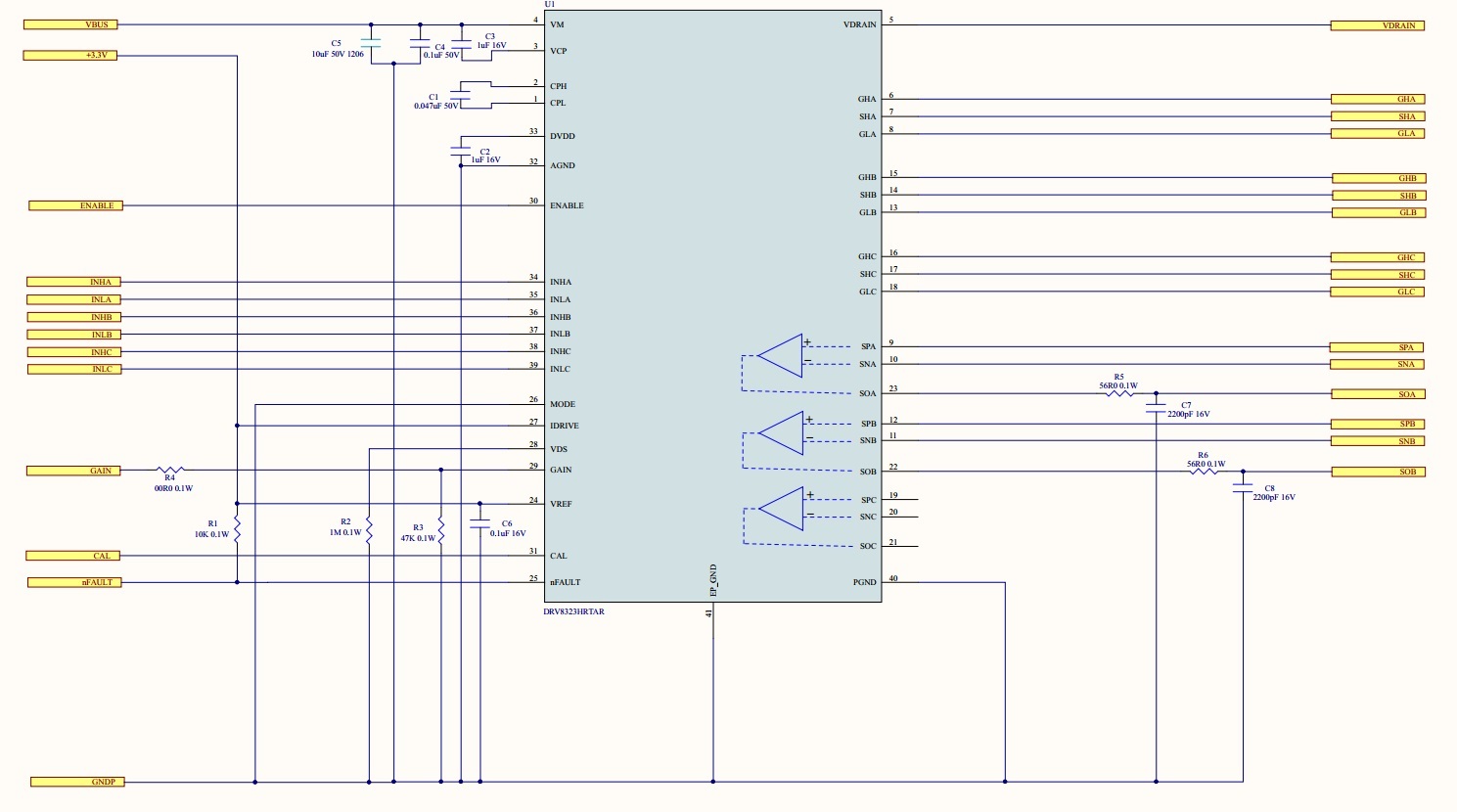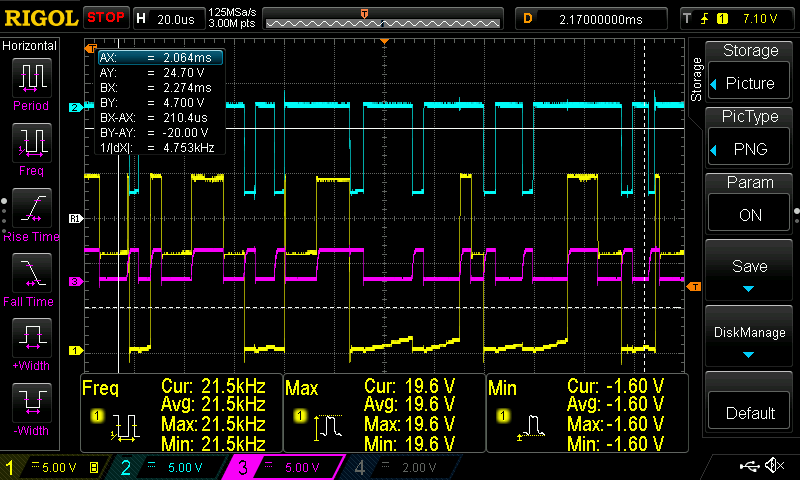Other Parts Discussed in Thread: DRV8302, , DRV832X
Hi all,
We just recently made a new design with intention of migrating from legendary DRV8302 to DRV8323H ( No SPI) and up to now we are having, unfortunately, a very bad time with it ( maybe too much smart gate driver is not good in analog and power electronics ...)
anyways, below I will share firstly our schematics of DRV and the MOSFETs:
as you can see, we are using parallel MOSFETs for multiple reasons and this is our preferred way of proceeding as we did this before with no issues with DRV8302. All the gate paths to DRV IC are having an equal length and we think the layout design is good enough.
We are using two shunts and the third channel of DRV8323 is unused, and we didn't ground the inputs of that, can this be an issue?
- Once we turn on the device, and apply PWM inputs to the DRV, we see that the nFault pin starts to pulse as below, while we see the switching at the output, but of course due to fault, the Motor is jogging and not moving... ( the same algorithm on DRV8302 works flawlessly). The switching freq. now is 20kHz.
it's almost impossible to understand what this fault means, I think the chip design team, could define different timings for different errors on fault pin, so it was at least possible to understand what type of error we are receiving in hardware mode design.
++ The second issue is, we don't see any output at the Amplifiers outputs, just a noisy signal around the 1.65V. to verify that, we tried to turn the motor manually and see if there is any current detected from that output, we saw no difference. ( The CAL pin is kept low )
We also tried to replace the chip after multiple tests, but no difference.
pls let us know where are we going wrong?
Regards






